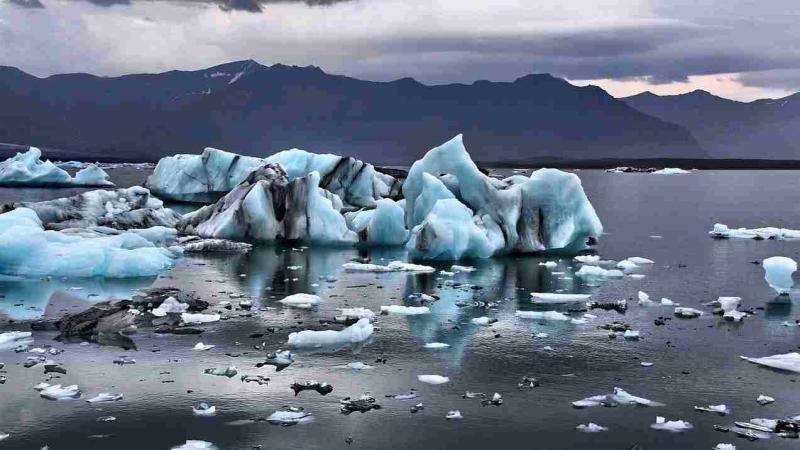
Faced by the heat of climate change and global warming, glaciers across the planet are melting away. Reports suggest that about 390 billion tons of ice and snow are lost every year, and at this rate, many glaciers may disappear within this century. Since glaciers act as sources of freshwater, their melting, besides increasing sea levels, will also threaten water availability in many parts of the world. A new study by researchers from Switzerland, Germany, Austria and India has tried to calculate the distribution of ice thickness or volume of ice in the glaciers present across the globe.
A detailed and accurate measurement of glacier volumes could aid in making better projections of future changes in the glaciers and in designing appropriate measures to protect them. However, so far, we know very little about how much ice the glaciers of the world hold. For example, in India, many of the 9675 glaciers present in the Himalayas are unexplored. In the present study, the researchers used five numerical models to estimate the ice thickness distribution of about 215,000 glaciers across the globe, excluding those in Greenland and Antarctica. Their findings were published in the journal Nature Geoscience.
The new estimate of ice volume of the studied glaciers is around 158,000 cubic kilometres—an 18% decrease from the previous estimate done a few years back. The largest glacier volumes were found in the Arctic region, that includes the Canadian and the Russian Arctic, Greenland’s periphery and Svalbard. These regions contained half of the estimated ice volume. High Mountain Asia, which consists of the Hindu Kush, Karakoram and the Himalayas, had the largest ice volume outside the poles along with Alaska.
The researchers opine that previous studies on ice volume calculations had gross overestimations. “Our results indicate that High Mountain Asia hosts about 27% less glacier ice than previously suggested”, they say. The researchers caution that the glaciers here might melt away before the estimated time of 2070. “The timing by which the region is expected to lose half of its present-day glacier area has to be moved forward by about one decade”, they add.
The study also predicts a reduction of summer meltwater volume by about a quarter (24%) of its current values, by the end of this century. Besides, if the glaciers melt away completely, it could cause a whopping 30 centimetres rise in the global sea levels, threatening many islands around the globe, the findings state.
A recently published report about the Hindu Kush Himalaya also indicated the potential threats to water availability, ecology, and economy due to the glacier melting in this region. The alarming findings of the current study call for quick action against global warming and climate change to save what is left of the glaciers in the world.






